Sidekick kicking torso position. Should your body always be up when throwing a sidekick?
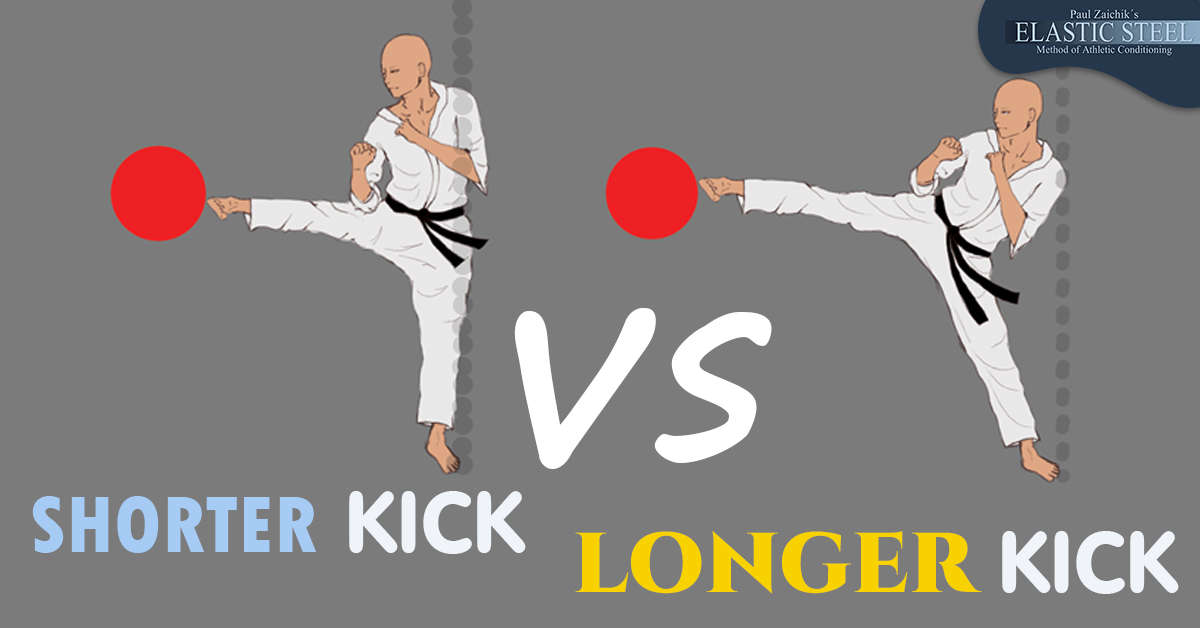
Sidekick kicking torso position. Should your body always be up when throwing a sidekick?
I get this question a lot because in ElasticSteel Kicking System we have the whole program focusing on the kicker's ability to keep the torso vertical and not drop when throwing a kick.
And in ElasticSteel Kicking System, that's one of the three components of the side kick:
And in ElasticSteel Kicking System, that's one of the three components of the side kick:
- The kicking leg (SIDE KICK Technical Kicking Leg Development)
- the supporting leg (SIDE KICK Height Supporting Leg Development)
- and the torso. (SIDE KICK Core Development)
And for this reason, people ask, How important is it for the torso to stay up during the kick? And should it always be up? Or is it okay to drop it down sometimes, or is it okay for it to always be dropped down?
And by the way, when we're talking about sidekicks, the same would apply to a roundhouse kick. And same would apply to a hook kick of course.
The question of should the torso always be vertical?
And the answer is: Having a strong and flexible torso when throwing a sidekick is a great tool to have! It gives you more things to play with, than a kicker who doesn't have that ability. You have more options. You could do more things with your sidekick.
And by the way, when we're talking about sidekicks, the same would apply to a roundhouse kick. And same would apply to a hook kick of course.
The question of should the torso always be vertical?
And the answer is: Having a strong and flexible torso when throwing a sidekick is a great tool to have! It gives you more things to play with, than a kicker who doesn't have that ability. You have more options. You could do more things with your sidekick.
Center of Gravity over the base of support
If you are not familiar with how the center of gravity is positioned over the base of support when throwing a sidekick: You can throw a sidekick and then keep your body as high as you can, and then try to lean away completely from the kick so your torso is vertical. And you will notice that as you are leaning away, your hips are moving in the direction of the kick, because, if the hips didn't move, you would fall over. Your torso would fall on the floor.
What does that mean? When you're trying to apply your sidekick in actual combat situation, it means that when your torso leans away, you will reach further with your sidekick. And as your torso is staying up, you will reach closer with your sidekick. Your kick will, in essence, be shorter.
What does that mean? When you're trying to apply your sidekick in actual combat situation, it means that when your torso leans away, you will reach further with your sidekick. And as your torso is staying up, you will reach closer with your sidekick. Your kick will, in essence, be shorter.
Short sidekick is a gem. It's a useful kick and people do not expect it!
So keeping your torso up gives you an opportunity to throw a short sidekick. Short sidekick is a gem. It's a powerful kick and people do not expect it, usually in short range.
I have a video talking about a whole sidekick in short range, between the punching techniques before and after a punch. You can take a look at this video below:
I have a video talking about a whole sidekick in short range, between the punching techniques before and after a punch. You can take a look at this video below:
Which kick is better? The short or the long one?
- If your opponent doesn't move away. You want a short sidekick.
- On the other hand, if your opponent does move away, or if you want to hit your opponent with a further kick, then you would lean away.
Also, when you try to push your opponent with a kick by leaning away, you are naturally doing a push. Because your hips move by themselves in direction of the kick to compensate for your body moving in the opposite direction. Some people even do this instinctually as they drop their body to a horizontal line. They also extend their arm out, this way it gives a little bit more length to the kick.
The benefits of having a flexible torso in closer range
So in essence having a flexible torso, an ability to keep your torso up allows you
to throw that sidekick, or a roundhouse kick or a hook kick in a closer range.
And also remember that if your kick is in between your punches inside your
punches so you you might punch, kick, punch. Your punch doesn't do too well when your body is dropped away from the kicks.
When your body is vertical, you can easily transition between kicks and punches so that's the second advantage of having a vertical torso, besides just allowing you to throw a shorter kick.
It is not common for fighters to throw sidekick inside the punches. And I guarantee you if you develop good core flexibility, you will be able to do things, which a lot of people cannot do. And more importantly, what a lot of people don't expect you
to do.
If you're interested in core Flexibility program for the Sidekick. Take a look below.
to throw that sidekick, or a roundhouse kick or a hook kick in a closer range.
And also remember that if your kick is in between your punches inside your
punches so you you might punch, kick, punch. Your punch doesn't do too well when your body is dropped away from the kicks.
When your body is vertical, you can easily transition between kicks and punches so that's the second advantage of having a vertical torso, besides just allowing you to throw a shorter kick.
It is not common for fighters to throw sidekick inside the punches. And I guarantee you if you develop good core flexibility, you will be able to do things, which a lot of people cannot do. And more importantly, what a lot of people don't expect you
to do.
If you're interested in core Flexibility program for the Sidekick. Take a look below.
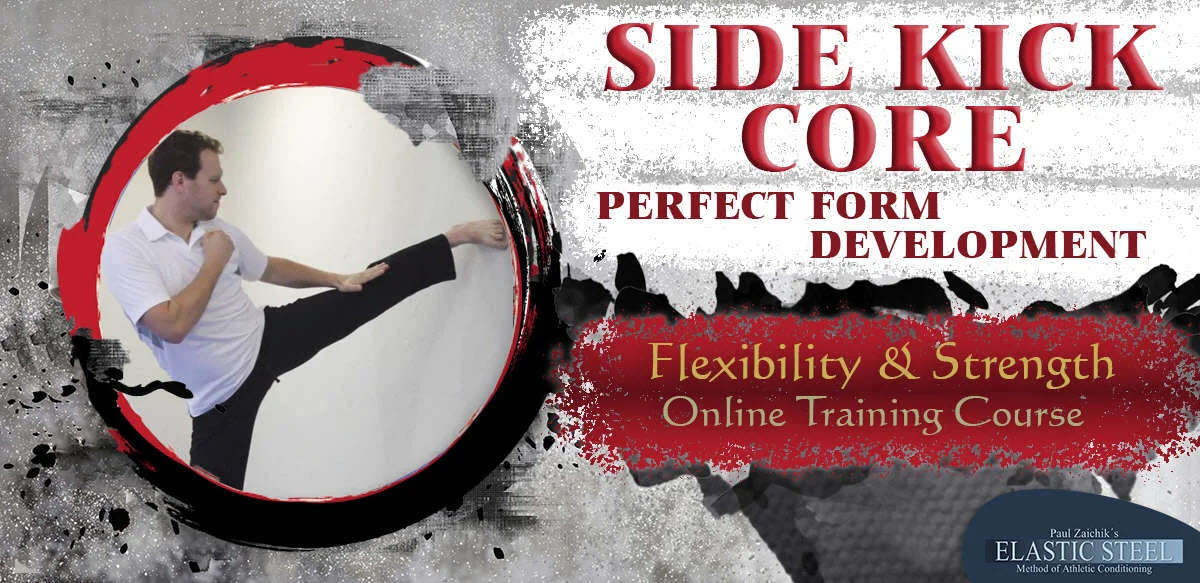
SIDE KICK CORE
PERFECT FORM DEVELOPMENT
PERFECT FORM DEVELOPMENT
Side Kick and Side Line Kicks: Trunk Flexibility and Strength Development for Optimum Kicks Development
SIDE KICK CORE DEVELOPMENTWhat is the difference between a champions and masters Side Kick and beginner Side Kick? (Roundhouse and Hook Kick too for that matter).
Take a second and visualize the two of them kicking side by side. What do you see? One will have his torso up and one will have it down. Torso position is what makes or breaks the 3 sideline kicks.
If your torso is strong and flexible the kick is hard to see when it’s coming. If the trunk is stiff and weak, it will drop before the kick is initiated. It can be seen a mile away.
Thus is takes less effort to throw a kick when the torso does not have to make a trip to the corner store and back every time the leg comes up. Yes, it’s that important and that’s why we made a program for it.
If your torso is strong and flexible the kick is hard to see when it’s coming. If the trunk is stiff and weak, it will drop before the kick is initiated. It can be seen a mile away.
Thus is takes less effort to throw a kick when the torso does not have to make a trip to the corner store and back every time the leg comes up. Yes, it’s that important and that’s why we made a program for it.
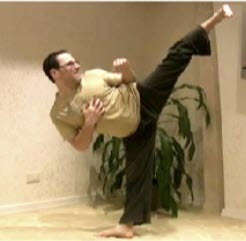
About the Author:
Paul Zaichik is an Exercise Science Expert, author of multitude of books, and the creator of Zaichik Stretching Technique (formely known as Kinesiological Stretching Technique). His speciality is flexibility training as well as body weight conditioning. His innovative method is designed to have maximum carry over into specific athletic techniques. Paul is the author of books and DVD’s on the topic of flexibility, martial arts and bodyweight training. Over the years, Paul Zaichik has worked with a variety of individuals including athletes, entertainers, and military personnel. His ElasticSteel Method of Athletic Conditioning programs, EasyFlexibility Programs and Zaichik Stretching Techniques are used world wide by both professional and amateurs with great success.
YOU MAY ALSO BE INTERESTED IN
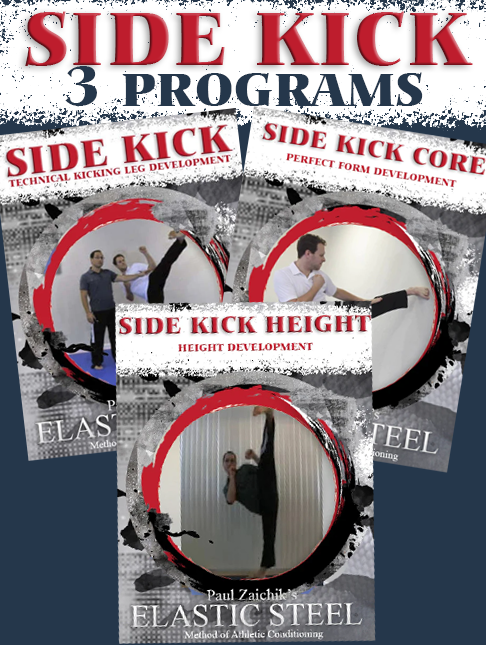
3 Program
Side Kick Combo
Side Kick Combo
This combo includes:
- Technical Kicking Leg Development
- Core Flexibility & Strength Development
- Height Development
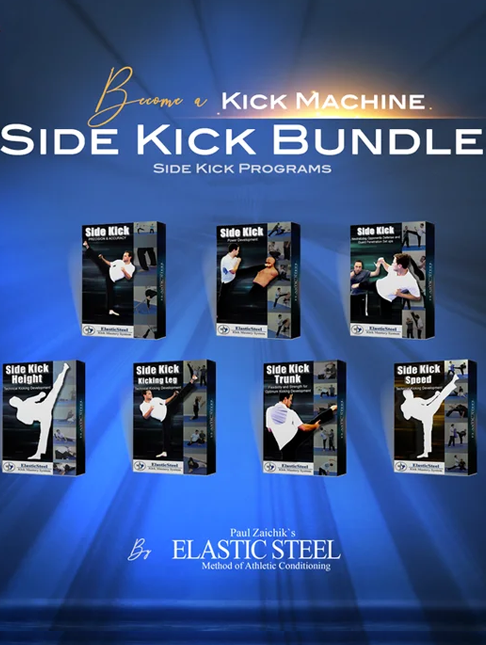
7 Program
Side Kick Combo
Side Kick Combo
This combo includes:
- Technical Kicking Leg Development
- Core Flexibility & Strength Development
- Height Development
- Speed Development
- Precision & Accuracy Development
- Power Development
- Flying Side Kick
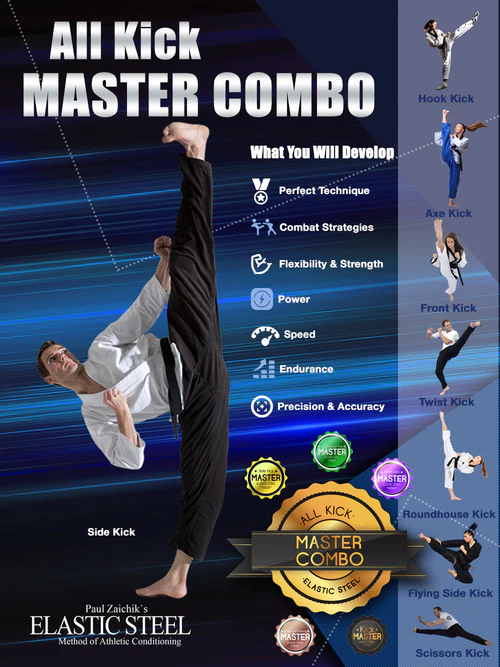
20 Program
All Kick Master Combo
+ 5 Gifts!
All Kick Master Combo
+ 5 Gifts!
This combo includes:
Side Kick:
- Technical Kicking Leg Development
- Core Flexibility & Strength Development
- Height Development
- Speed Development
- Precision & Accuracy Development
- Power Development
- Neutralizing Opponents Defense and Guard Penetration Set Ups
Roundhouse and Hook Kicks:
- Roundhouse Kick: Technical Kicking Leg Development
- Roundhouse Kick: Speed Development
- Roundhouse Kick: Power Development
- Hook Kick: Power Development
Front Kick:
- Front Kick and Front Line Kicks: Technical Kicking Leg Development
- Front Kick: Speed Development
- Push Front Kick: Power Development
- Axe Kick: Power Development
- Ball of the Foot: Point of Impact
Advanced Kicks:
- Scorpion Kick: Perfect form Development
- Flying Side Kick: Technique and Jumping Height Development
- Flying Split Scissors Kick, Two Direction Kick
- Twist Kick Technical Kicking Leg Development
- Twist Kick Follow Along Routine
+ 5 GIFTS!

Leave a comment